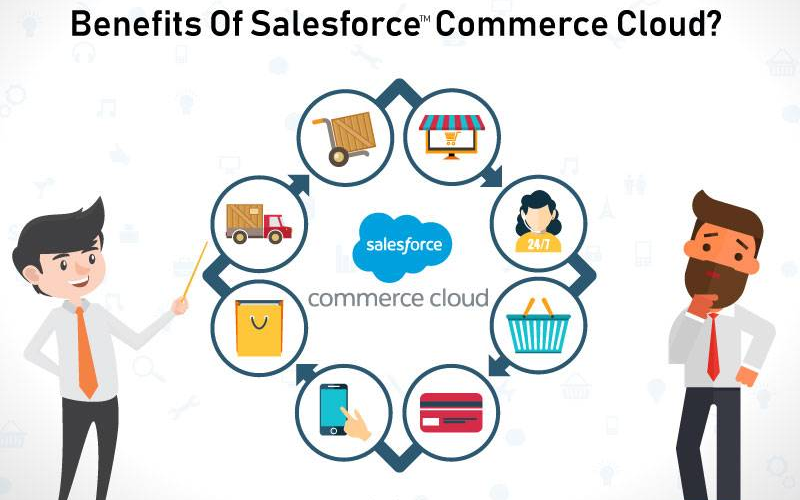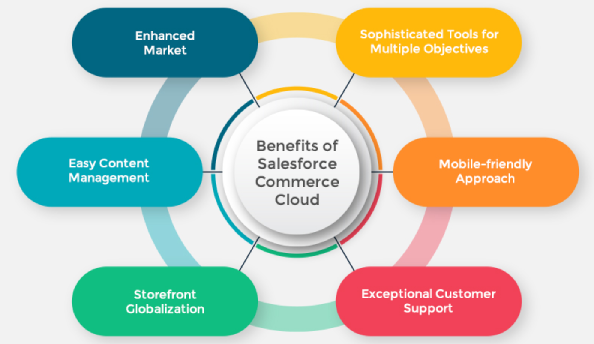Salesforce Commerce Cloud helps online retailers market, merchandise, enhance their shopping experience, fulfill orders, and assist customers.

Commerce Cloud can be divided into two broad categories: There are two types of commerce: B2C and B2B, they are built on completely different tech stacks for different use cases and shopper needs.
Here are some of the differences between the two:
B2C Commerce: A separate technology stack dedicated to “Business to Consumer”, SiteGenesis, Storefront Reference Architecture (SFRA), Headless Commerce, and progressive web app development (PWA).
B2B Commerce: The feature is native to the Salesforce platform and focused on business-to-business (following the core multi-tenant architecture of the platform).
Why Learn Commerce Cloud?
Commerce Cloud is one of the most challenging Salesforce products to learn, and for good reason!
- eCommerce is a fascinating domain: Building an eCommerce website that supports millions of orders and users is a game changer, both for the organization and for the customer. Most of the biggest and most successful tech companies have either eCommerce portals for their services (like Amazon) or are eCommerce giants themselves (like Apple, Google, and others).
- There is a huge demand for Salesforce Commerce Cloud skills: There will be a high demand for IT services in the coming years. Only two or three Salesforce Developers work in B2C commerce, while approximately ten work in B2B commerce. There is no doubt that Salesforce Commerce Cloud Architects are among the most sought-after and well-paid positions in the Salesforce ecosystem.
- It’s a natural next step: For eCommerce professionals, the next step is to learn Commerce Cloud and take advantage of this amazing opportunity.

Salesforce Commerce Cloud: Skills Required
B2C Commerce Cloud is a separate technology stack from the Salesforce platform (non-native) that uses JavaScript and web technologies (which have gone through multiple architecture iterations). To become skilled on this platform, you’ll need experience with web technologies, i.e., HTML, JavaScript, CSS (and relevant frameworks). Front-end developers and full-stack developers are ideal candidates.
A native Salesforce platform, B2B Commerce Cloud utilizes Salesforce’s Lightning Experience (UI) and follows Salesforce’s multi-tenant architecture. Apex and Lightning Web Components (LWC) are required skills. It is ideal for Salesforce Developers to apply.
What Are the Steps to Getting a Commerce Cloud Sandbox?
With the help of a sandbox environment (also known as a staging environment with other technologies), you can test new configurations, code, and automation outside your production instance. Sandboxes are like replicas of your production instances with data and metadata (depending on the type of sandbox).





